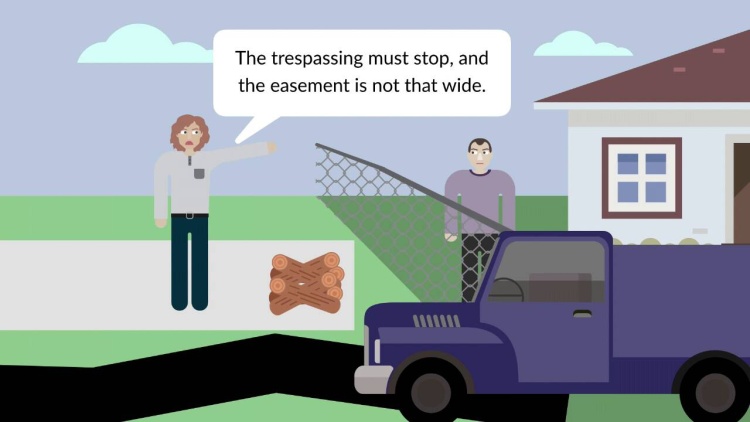Brown v. Voss
Washington Supreme Court
715 P.2d 514 (1986)
- Written by Dennis Chong, JD
Facts
[Editor’s Note: The reader should consult the casebook for a diagram depicting the land at issue.] In 1952, the then-owners of Parcel A granted the then-owners of Parcel B a private road easement that was to be used for ingress and egress to and from Parcel B through Parcel A. Voss (defendant) acquired Parcel A in 1973, and Brown (plaintiff) acquired Parcels B and C in 1977, at different times and from different owners. The previous owners of Parcel C had nothing to do with the easement relating to Parcel B. Brown desired to build a house on his land straddling Parcels B and C and began preparations for this endeavor in November 1977. In April 1979, after Brown had spent almost $11,000 preparing to build the house, Voss placed a fence, logs, and a concrete sump on the easement land in order to prevent Brown from further using it. Brown sued to have the obstructions removed. Voss countersued to prevent Brown from using the easement for access to anything other than Parcel B. The trial court found that (1) there was no significant increase in the traffic along the easement as a result of Brown’s acquisition of Parcel C; (2) Parcel C would be landlocked if access to it through the easement on Parcel A were prohibited, which would hamper Brown’s enjoyment of his land; and (3) any order prohibiting Brown from using the easement to get to Parcel C would be impractical and unenforceable. The court ruled in favor of Brown and ordered that he be permitted to use the easement to access Parcels B and C. The court of appeals reversed, and Brown appealed to the Washington Supreme Court.
Rule of Law
Issue
Holding and Reasoning (Brachtenbach, J.)
Dissent (Dore, J.)
What to do next…
Here's why 899,000 law students have relied on our case briefs:
- Written by law professors and practitioners, not other law students. 47,000 briefs, keyed to 994 casebooks. Top-notch customer support.
- The right amount of information, includes the facts, issues, rule of law, holding and reasoning, and any concurrences and dissents.
- Access in your classes, works on your mobile and tablet. Massive library of related video lessons and high quality multiple-choice questions.
- Easy to use, uniform format for every case brief. Written in plain English, not in legalese. Our briefs summarize and simplify; they don’t just repeat the court’s language.





